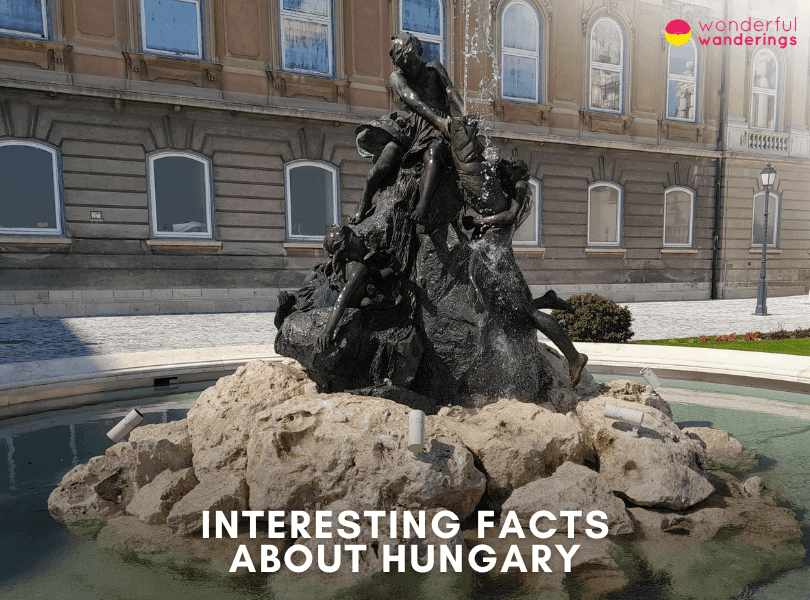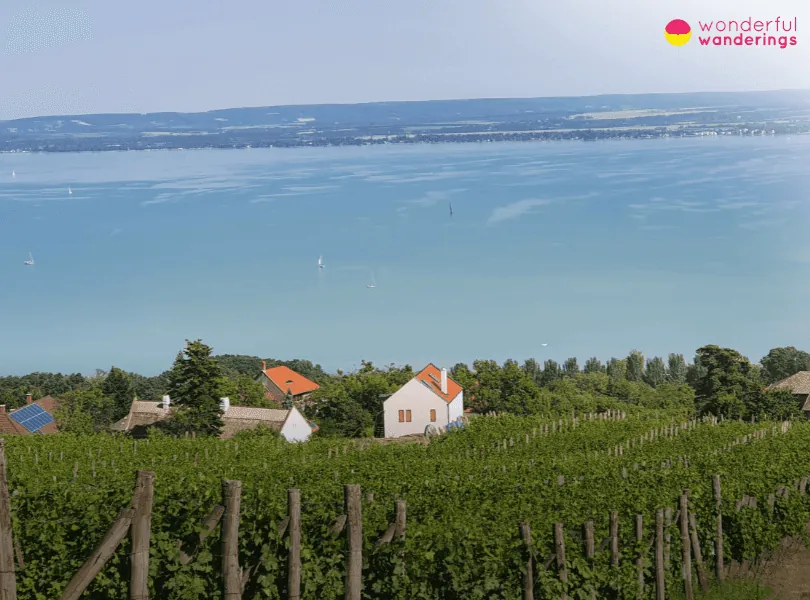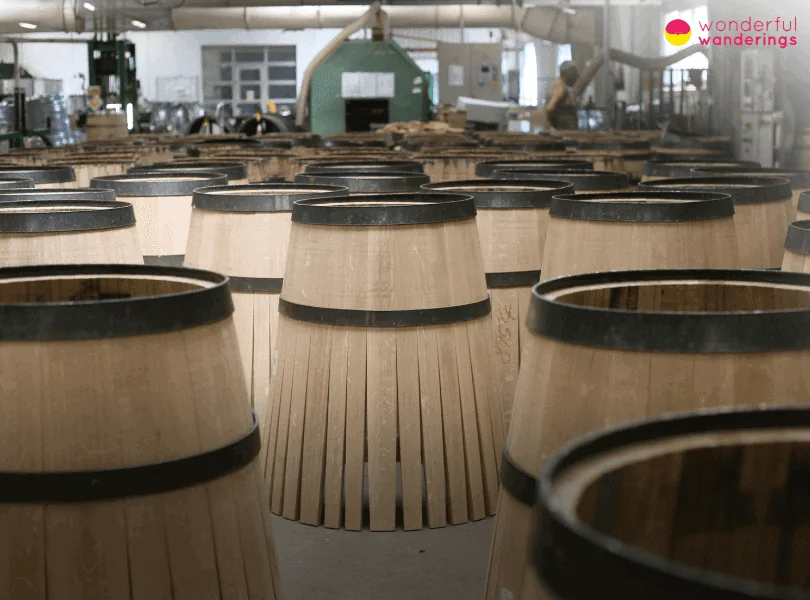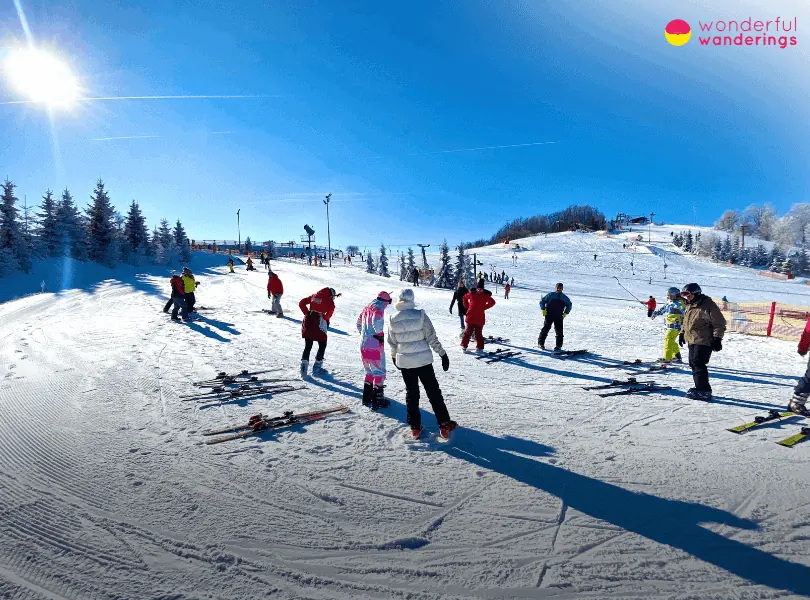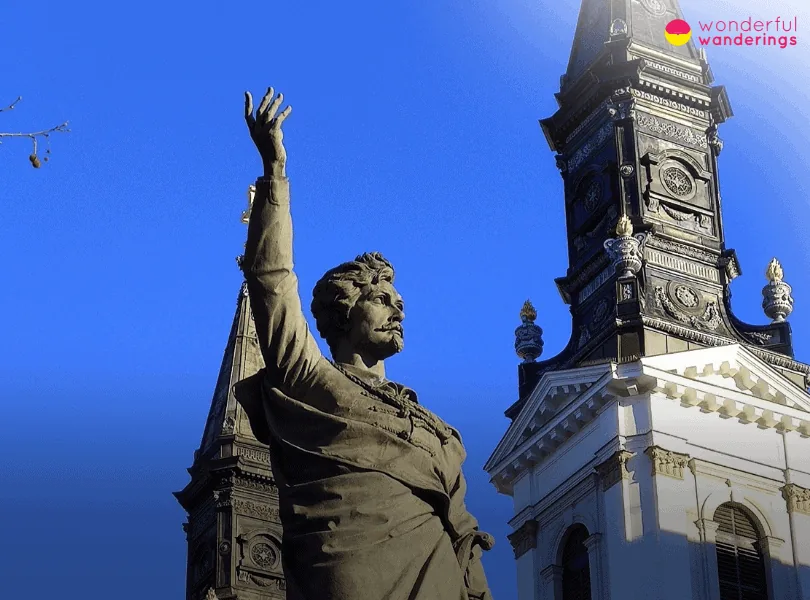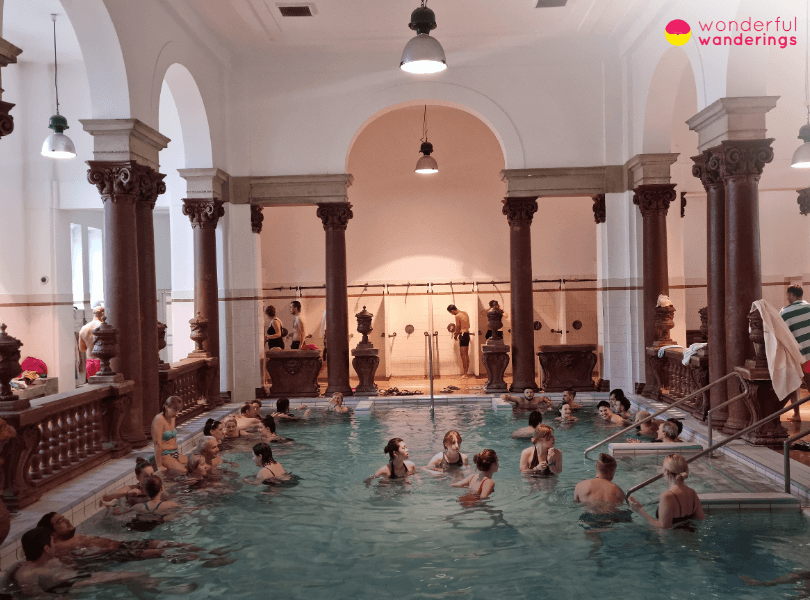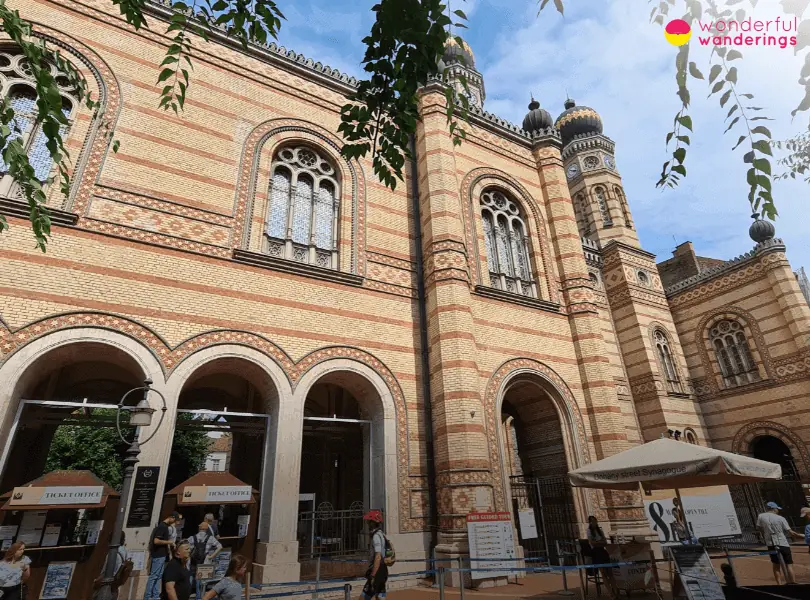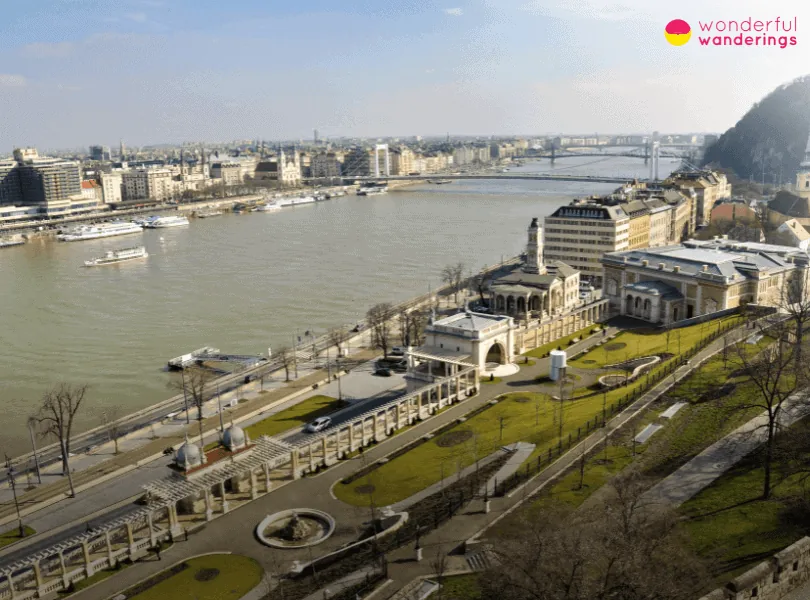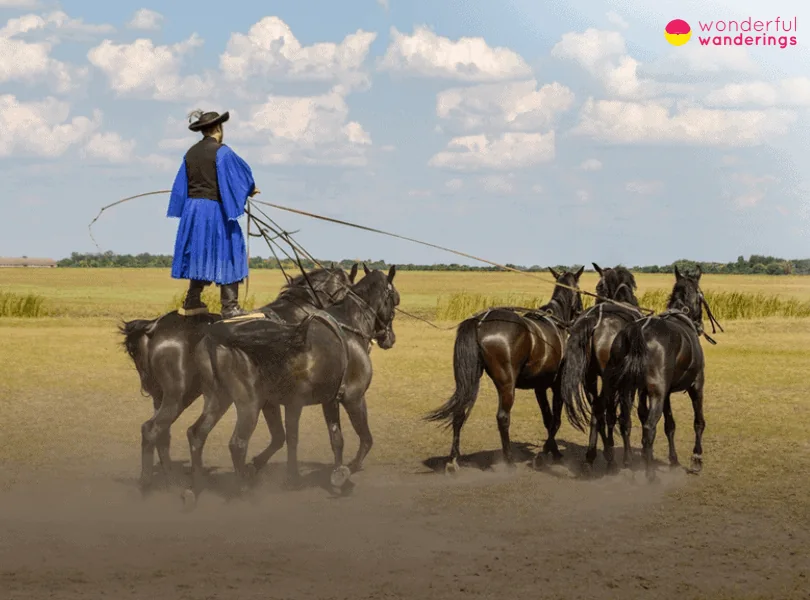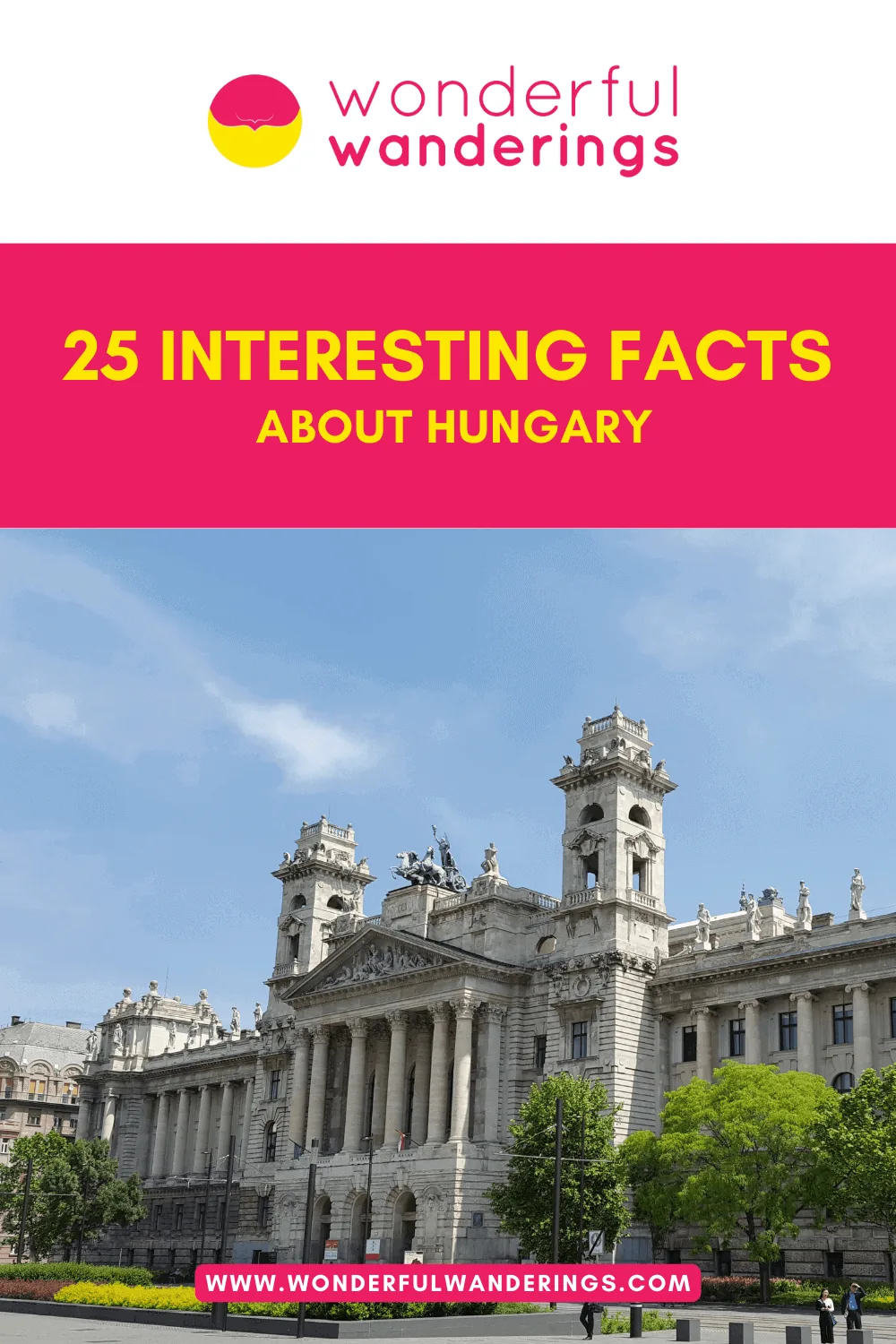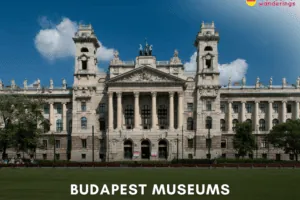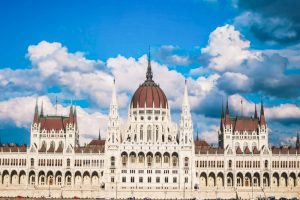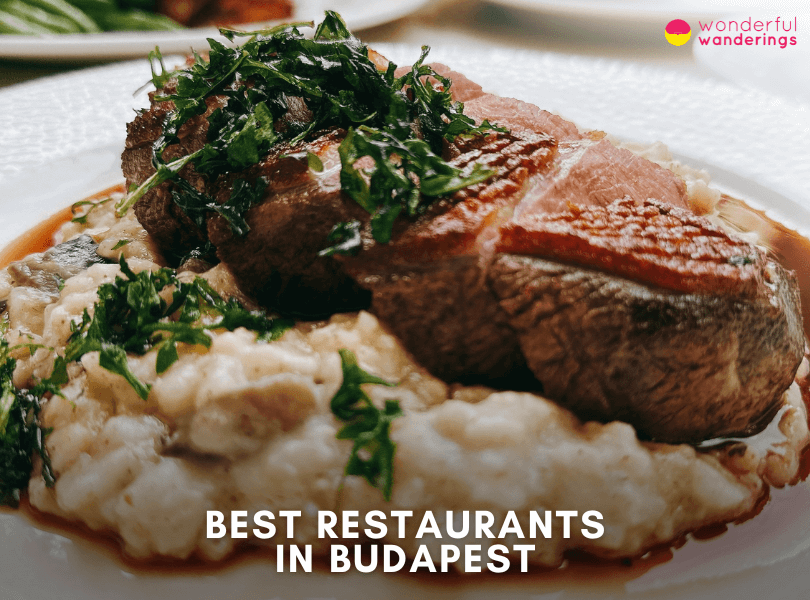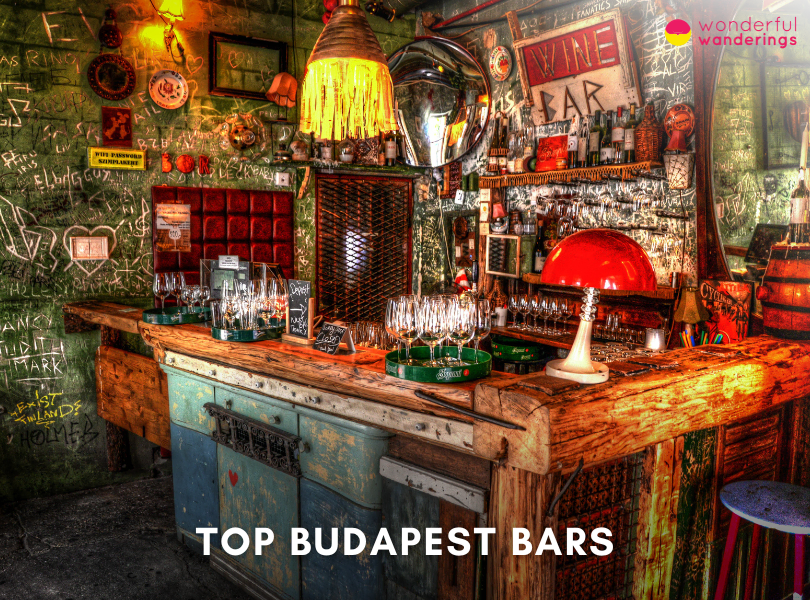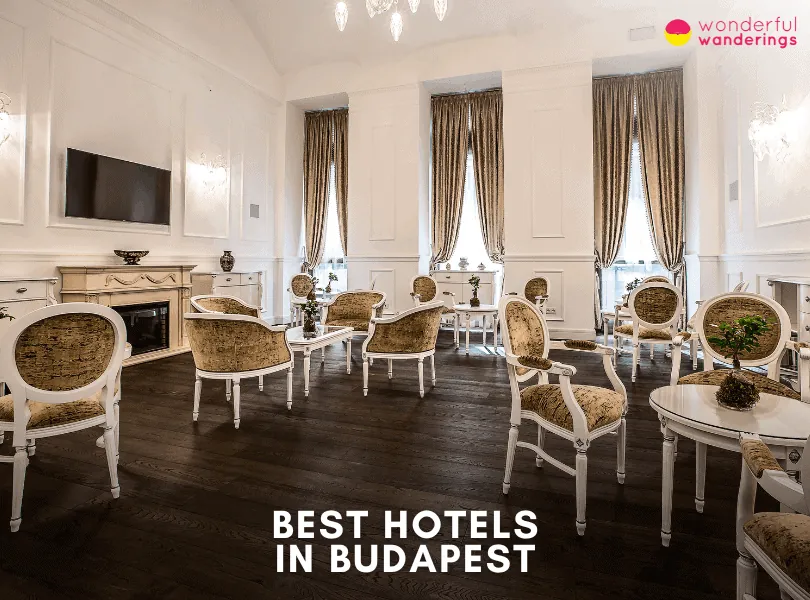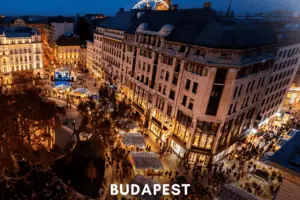Hungary is a landlocked country in Central Europe. It has a rich history and culture dates back to the 9th century, when the Magyars, the ancestors of modern Hungarians, settled in the Carpathian Basin. Hungary is also known as Magyarország, which means “Land of Magyars” in Hungarian. It has more than 1,500 spas, some of which have Roman, Greek and Turkish influences. The country is also one of the leading countries in the world in terms of industrial carbon dioxide emissions. Hungary has the largest synagogue in Europe, the Dohány Street Synagogue, which can accommodate up to 3,000 people. It also has the second largest thermal lake in the world, Lake Hévíz, which has a temperature of 25 ℃ (77 ℉) in winter and 38 ℃ (100 ℉) in summer.
Listed below are some interesting facts about Hungary.
- Hungary Has an Inner Sea. Hungary has an inner sea, which is a large freshwater lake called Lake Balaton. It covers 600 square meters (6458.4 square feet) and is the biggest lake in Central Europe. Most people call it the Hungarian Sea because of its size and beauty.
- Hungary Is an Ancient Wine Country. Hungary is an ancient wine country with a history of the Roman Empire. The rulers and nobles of Europe highly valued Hungarian wines and Hungarian wine production thrived for centuries. Hungary has 22 official wine regions, each with its characteristics and specialties.
- Hungary and the King of Rock and Roll. Hungary and the King of Rock and Roll have a surprising connection. In 1957, Elvis Presley performed a song called Peace in the Valley on a TV show. The song was dedicated to the Hungarian people, who had just suffered a brutal Soviet invasion. Elvis wanted to show his support and sympathy for their struggle.
- Strap on Your Skis. Hungary has some ski resorts despite being landlocked and mostly flat. It often experiences significant snowfalls in winter, especially in the Northern Uplands. The country has 15 ski resorts with 35 kilometers (22 miles) of slopes.
- It Is Home to a Mummified King. Hungary preserves and venerates the right hand of its first king and patron saint, Stephen I. He was the last grand prince of the Hungarians and the first king of Hungary from 1000 or 1001 until he died in 1038. He was canonized in 1083 and his right hand was found to be intact and mummified when his body was exhumed.
Contents
- 1. Hungary Has an Inner Sea
- 2. Hungary Is an Ancient Wine Country
- 3. Hungary and the King of Rock and Roll
- 4. Strap on Your Skis
- 5. It Is Home to a Mummified King
- 6. A Nation of Inventors and Masters of the Silver Screen
- 7. You Can Become a Good Writer With a Single Touch
- 8. Hungary Has More Than 1300 Thermal Water Springs
- 9. A Hungarian Architect invented the Rubik’s Cube
- 10. Pálinka the Heal for All Pain
- 11. The Magic Number in Hungary. 96
- 12. Hungarians are Chess Masters
- 13. There Are More Than 40 Varieties of Paprika Grown in Hungary
- 14. Hungary Is One of Europe’s Oldest Countries
- 15. Budapest Was Created When Three Cities Merged
- 16. Hungary Was Anti-soviet Communism
- 17. The Largest Synagogue in Europe Is in Budapest
- 18. Hungary Is Home to the Largest Lake in Central Europe
- 19. You Can’t Name Your Child Unless The Government approves it
- 20. No Building in Budapest Is Taller Than 96 Meters
- 21. It Is Considered Rude to Clink Your Beer Glasses
- 22. The First Foreign Fast Food Restaurant Was McDonald’s
- 23. There Are Cowboys (Csikos) in Hungary
- 24. The Hungarian Alphabet Has 44 Letters
- 25. 27% VAT Is Collected in Hungary
- How did Hungary get its name?
- Why should you visit Hungary?
1. Hungary Has an Inner Sea
Hungary has an inner sea, which is a large freshwater lake called Lake Balaton. It covers 600 square meters (6458.4 square feet) and is the biggest lake in Central Europe. Most people call it the Hungarian Sea because of its size and beauty. It is a popular tourist destination for locals and foreigners, who enjoy its beaches and volcanic hills.
2. Hungary Is an Ancient Wine Country
Hungary is an ancient wine country with a history of the Roman Empire. The rulers and nobles of Europe highly valued Hungarian wines and Hungarian wine production thrived for centuries. Hungary has 22 official wine regions, each with its characteristics and specialties. Some of the most famous Hungarian wines are Tokaji aszú, a sweet dessert wine and Egri Bikavér, a robust red wine blend. Hungary’s wine culture was influenced by many factors, including Celtic, Roman, Magyar, Turkish and Germanic traditions. Hungary also has a unique classification system for its wines based on soil, aspect and propensity to noble rot. This system was first introduced in Tokaj in 1730 and is the oldest in the world. Hungary’s wines reflect the diversity and richness of its geography and history.
3. Hungary and the King of Rock and Roll
Hungary and the King of Rock and Roll have a surprising connection. In 1957, Elvis Presley performed a song called Peace in the Valley on a TV show. The song was dedicated to the Hungarian people, who had just suffered a brutal Soviet invasion. Elvis wanted to show his support and sympathy for their struggle. In 2011, Hungary honored Elvis for his gesture by granting him posthumous citizenship. The country also named a small public park after him in Budapest. The park has a plaque with Elvis’ name and a quote from his song. Elvis is one of the few foreigners who received this recognition from Hungary.
4. Strap on Your Skis
Hungary has some ski resorts despite being landlocked and mostly flat. It often experiences significant snowfalls in winter, especially in the Northern Uplands. The country has 15 ski resorts with 35 kilometers (22 miles) of slopes. Some of the best ski resorts in Hungary are Síaréna Eplény, which has the largest and most varied slopes in the country, Bánkút Ski Center, which is located in the Bukk National Park and offers cross-country skiing and Dobogókő Ski Center, which is close to Budapest and has a cozy ski hut. Skiing in Hungary is cheaper and less crowded than in the Alps, offering a unique winter experience for locals and tourists.
5. It Is Home to a Mummified King
Hungary preserves and venerates the right hand of its first king and patron saint, Stephen I. He was the last grand prince of the Hungarians and the first king of Hungary from 1000 or 1001 until he died in 1038. He was canonized in 1083 and his right hand was found to be intact and mummified when his body was exhumed. The hand was separated from the arm and kept as a relic in various places until it returned to Hungary in 1945. The mummified hand is known as the Holy Right and is kept in a golden reliquary in the Basilica of St. Stephen in Budapest. Hungary’s most sacred Catholic relic symbolizes national identity and pride. Every year, on August 20th, the feast day of St. Stephen, the hand is taken out for a procession around the city. The hand is also said to have miraculous powers, such as healing the sick and protecting the country from enemies. The hand is a unique and fascinating part of Hungary’s history and culture.
6. A Nation of Inventors and Masters of the Silver Screen
Hungary has contributed to many fields of science, technology and entertainment. Hungary has produced many famous inventors, such as Ernő Rubik, who created the Rubik’s Cube, a popular 3D puzzle; László Bíró, who invented the ballpoint pen, the most common tool for writing and David Schwarz, who designed the first rigid airship, a precursor to the zeppelin. These inventors and others have solved complex and simple problems with their creativity and innovation.
Hungary has also given the world many talented actors and filmmakers who have starred in or directed some of the most acclaimed movies of all time. Some of the most famous Hungarian actors are Zsa Zsa Gabor, who appeared in more than 70 films and TV shows, Peter Lorre, who played memorable roles in Casablanca and The Maltese Falcon and Bela Lugosi, who became a horror icon for his portrayal of Dracula. Some of the most famous Hungarian filmmakers are Michael Curtiz, who directed Casablanca and won an Oscar for best director; George Cukor, who directed My Fair Lady and The Philadelphia Story and also won an Oscar for best director and István Szabó, who directed Mephisto and won an Oscar for best foreign language film. These actors and filmmakers have enriched the world of cinema with their artistry and vision.
7. You Can Become a Good Writer With a Single Touch
Hungary has a tradition of touching the statues of famous writers for inspiration. Most Hungarian writers have left their mark on the world of literature and some have been immortalized in bronze or stone. The most famous statue is that of Sandor Petofi, the national poet of Hungary, who wrote the National Song that sparked the revolution of 1848. His statue stands in front of the National Museum in Budapest and many people touch his hand or pen for good luck or creative boost. The other statue that attracts many aspiring writers is that of Attila Jozsef, one of the greatest Hungarian poets of the 20th century, who wrote about social issues, love and death. His statue sits on the bank of the Danube River, near the Parliament building and depicts him leaning on a railing and looking at the water. Most people touch his feet or his coat for a touch of his genius. Some statues of famous Hungarian writers that are believed to have magical powers are those of Antal Szerb, a novelist and scholar who died in a Nazi labor camp, Miklos Radnoti, a poet who was executed by the Nazis and buried in a mass grave and Imre Kertesz, the only Hungarian writer to win the Nobel Prize for literature. These statues are located in various places in Budapest and are visited by many locals and tourists who want to pay tribute to their works and lives.
8. Hungary Has More Than 1300 Thermal Water Springs
Hungary has the most thermal water springs in Europe and the fifth most in the world. The country has used thermal water springs for thousands of years, since the Roman and Ottoman times. Budapest, the capital city, has more than 100 thermal water springs and is known as the “Spa City” of Europe. Some of the most famous thermal water springs in Hungary are the Széchenyi Thermal Bath, the largest medicinal bath in Europe, the Gellért Thermal Bath, a beautiful art nouveau building with mosaic tiles and stained glass windows and the Thermal Lake of Hévíz, the largest biologically active natural thermal lake in the world. Thermal water springs are an integral part of Hungarian culture and tourism and attract millions of visitors every year.
9. A Hungarian Architect invented the Rubik’s Cube
Ernő Rubik, born in Budapest in 1944, was a professor of architecture who wanted to create a model of three-dimensional movement for his students. He experimented with wooden blocks and paper clips until he devised a cube that could rotate on three axes without falling apart. He called it the Magic Cube and patented it in 1975. The Rubik’s Cube, as it was later renamed, became a worldwide sensation in the 1980s, selling over 350 million units by 2018. The cube has inspired many books, artworks, films and competitions and has been used as a tool to teach mathematics and group theory.
10. Pálinka the Heal for All Pain
Pálinka is a strong alcoholic drink made from various fruits, such as apricots, plums, pears and cherries. It has been produced in Hungary for centuries and has a protected status in the European Union. Pálinka can have an alcohol content of up to 86% and is usually consumed as a shot. Most Hungarians claim that pálinka can cure or prevent various illnesses, such as colds, flu, stomach aches and sore throats. They also say that pálinka can boost the immune system, improve digestion and relieve stress. Some Hungarians drink pálinka in the morning, before meals or after a long day. Pálinka is also used as a disinfectant, a painkiller and a remedy for insect bites. However, there is no scientific evidence to support these claims and drinking too much pálinka can have negative effects on health.
11. The Magic Number in Hungary. 96
The number 96 has been associated with Hungary since 896 when the Hungarian tribes led by Prince Árpád settled in the Carpathian Basin. The event is considered the foundation of the Hungarian state and the year 1896 marked the country’s millennial celebration. The number 96 also appears in many aspects of Hungarian life, such as laws, symbols and traditions. For example, according to the law, the Hungarian national anthem must be sung in 96 seconds. The highest building in Hungary, the Parliament, is 96 meters tall and no other structure can be higher than that. The Hungarian flag has a width-to-length ratio of 1.2, which is equivalent to 48.96. The number 96 is also used in some Hungarian expressions, such as “kilencvenhatodikos” (meaning “one of the 96th”), which refers to someone who is very old or outdated.
12. Hungarians are Chess Masters
Chess is a popular and respected sport in Hungary and many Hungarians learn to play chess at a young age. It has over 30,000 registered players and hundreds of chess clubs and tournaments. Hungary has produced many famous chess masters, such as László Szabó, Géza Maróczy, Zoltán Almási and Peter Leko. However, the most notable Hungarian chess player is Judit Polgár, widely regarded as the strongest female chess player of all time. Polgár achieved the title of Grandmaster at 15, breaking the record held by Bobby Fischer. She is the only woman to have surpassed 2700 Elo, reaching a peak rating of 2735 in 2005. She has defeated eleven current or former world champions, including Magnus Carlsen, Garry Kasparov and Anatoly Karpov.
13. There Are More Than 40 Varieties of Paprika Grown in Hungary
Paprika is the national spice of Hungary and it is made from dried and ground chili peppers. Paprika has been cultivated in Hungary since the 16th century when the Turks introduced chili peppers. Paprika is used in many Hungarian dishes, such as goulash, chicken paprikash and lecsó. Hungary has eight grades of paprika, ranging from mild and sweet to hot and spicy. Each grade has a different color, flavor and pungency. The grades are determined by the type of pepper, the soil, the climate and the processing method. Some of the most famous types of Hungarian paprika are különleges (special quality), édesnemes (noble sweet) and erős (strong). The European Union protects Hungarian paprika, which can only be labeled as such if produced in Hungary.
14. Hungary Is One of Europe’s Oldest Countries
Hungary was founded in 897 by the Magyars, a nomadic people who migrated from the Ural Mountains to the Carpathian Basin. They established the Principality of Hungary under the leadership of Prince Árpád, the founder of the Hungarian nation. The principality later became the Kingdom of Hungary in 1000, when King Stephen I was crowned the first Christian monarch of the Magyars. Hungary survived many invasions, wars and partitions throughout its history and lost most of its territory and population after World War I when the Treaty of Trianon (1920) reduced it to one-third of its former size. Despite these challenges, Hungary preserved its identity, culture and language, unique among the European nations and unrelated to any other major language. Hungary also contributes to science, art, music, literature, sports and rich traditions and cuisine. Hungary is a member of the European Union, NATO and the United Nations and has a parliamentary democracy with a multiparty system.
15. Budapest Was Created When Three Cities Merged
Budapest is Hungary’s largest and most populous city and it lies on both sides of the Danube River. However, it was not always a unified city but a combination of three separate towns. Buda, Pest and Óbuda. Buda, Pest and Óbuda had different origins and characteristics. Buda was the ancient seat of the Hungarian kings, located on the hilly west bank of the river. Pest was a commercial and industrial center and it was situated on the flat east bank of the river. Óbuda was the oldest settlement of the three, founded by the Romans as Aquincum. Bridges connected the three towns but remained independent until 1873, when they were officially merged into one city. Budapest. The new city became Hungary’s political, cultural and economic hub, witnessing many historical events and transformations in the following decades.
16. Hungary Was Anti-soviet Communism
Hungary was a communist country after World War Two, but it did not agree with many of the policies and practices of the Soviet Union. Hungary had a history of being anti-Russian and anti-Communist before 1939 and it allied with Hitler during the war. In 1956, Hungary rose against Soviet oppression in a popular uprising that lasted for 12 days. The Hungarian Revolution was a spontaneous nationwide movement that demanded political reforms, freedom of speech and the withdrawal of Soviet troops. The revolution was brutally crushed by the Soviet army, which invaded Hungary and killed thousands of people. However, the revolution inspired other anti-Soviet movements in Eastern Europe, showing the world the Hungarian people’s courage and determination.
17. The Largest Synagogue in Europe Is in Budapest
The Dohány Street Synagogue, also known as the Great Synagogue or the Tabakgasse Synagogue, is a historical building on Dohány Street in the 7th district of Budapest. It is the largest synagogue in Europe, seating 3,000 people and the second largest in the world after Temple Emanu-El in New York City. It was built between 1854 and 1859 in the Moorish Revival style, with the decoration based on Islamic models from North Africa and medieval Spain. The synagogue’s architect, Ludwig Förster, believed that no distinctively Jewish architecture could be identified and thus chose “architectural forms that have been used by oriental ethnic groups that are related to the Israelite people and in particular the Arabs”. The Dohány Street Synagogue complex consists of the Great Synagogue, the Heroes’ Temple, the graveyard, the Memorial and the Jewish Museum, which was built where Theodor Herzl’s house of birth stood. The synagogue was bombed by the pro-Nazi Arrow Cross Party in 1939 and used as a base for German Radio and a stable during World War II. It suffered some severe damage from aerial raids during the Nazi Occupation and the Siege of Budapest. During the Communist era, the damaged structure became again a prayer house for the much-diminished Jewish community. Its restoration and renovation started in 1991, was financed by state and private donations and was completed in 1998. The synagogue symbolizes the Jewish presence and resilience in Hungary and is a center of Neolog Judaism. It is also a popular tourist attraction and one of the top 10 sights of Budapest.
18. Hungary Is Home to the Largest Lake in Central Europe
Lake Balaton is a freshwater rift lake in the Transdanubian region of Hungary, 80 kilometers (50 miles) southwest of Budapest. It covers an area of 598 square kilometers (231 square miles), making it the largest lake in Central Europe. It is also one of the region’s foremost tourist destinations, attracting millions yearly visitors. Lake Balaton has a long and fascinating history, dating back less than a million years. It was formed by the coalescence of five smaller lakes that extended in a north-south chain, separated by ridges. One of these ridges is now the Tihany Peninsula, which narrows the lake to a width of 1.6 kilometers (1 mile). The lake has a unique chemical composition, with carbonate and sulfate as the predominant anions and magnesium, calcium and sodium as the corresponding cations. This gives the lake its sulfo-carbonate character, which is rare among central European lakes. The lake is also home to a rich and diverse flora and fauna and it has been designated as a Ramsar Wetland of International Importance.
19. You Can’t Name Your Child Unless The Government approves it
In Hungary, parents must choose a name for their child from a list of pre-approved names published by the Research Institute for Linguistics of the Hungarian Academy of Sciences. The list contains 4,000 female and 4,500 male names and it is updated every year. The names are mainly of Hungarian, Latin, Greek, German, Slavic or Hebrew origin and they must follow the rules of Hungarian grammar and orthography. If parents want to give their child a name not on the list, they must apply for approval from the same institute. The institute evaluates the proposed name according to a set of criteria, such as the meaning, pronunciation, spelling, gender and historical and cultural background of the name. The institute can reject a name if it is considered offensive, ridiculous, confusing or foreign. The institute also has the authority to change the surname of a child if it does not match the surname of the parents or the gender of the child. The naming law aims to protect the child’s rights and interests and preserve the Hungarian language and culture.
20. No Building in Budapest Is Taller Than 96 Meters
Budapest has no skyscrapers or high-rise buildings. The reason for this is that a law limits the height of any building in Budapest to 96 meters (314.9 feet). This law was enacted to preserve the city’s historic appearance and to honor the symbolic value of the number 96. The only two buildings in Budapest that are allowed to reach 96 meters are St. Stephen’s Basilica and the Hungarian Parliament Building, which are both important landmarks and symbols of the nation. The Basilica is a Roman Catholic church completed in 1905 and dedicated to the first king of Hungary, St. Stephen. The Parliament Building is a Gothic Revival edifice that was finished in 1904 and housed the legislative branch of the government.
21. It Is Considered Rude to Clink Your Beer Glasses
Hungary has a tragic past marked by wars, invasions, revolutions and oppression. The most painful episode in its history was the 1848-1849 revolution against the Austrian Habsburg Empire, which ended in the defeat and execution of many Hungarian leaders. According to legend, the Austrians celebrated their victory by toasting and clinking their beer glasses, mocking the Hungarians’ suffering. This act of disrespect enraged the Hungarians, who vowed not to clink their beer glasses for 150 years until 1998. Although the ban has expired, many Hungarians still avoid clinking their beer glasses, especially with foreigners, as a sign of respect for their martyrs and their nation.
22. The First Foreign Fast Food Restaurant Was McDonald’s
McDonald’s opened its first restaurant in Hungary on April 29, 1988, in Régiposta Street, downtown Budapest. It was the first foreign fast-food restaurant to enter the country, which was still under communist rule. The opening was a huge event, attracting thousands of curious Hungarians who waited in long lines to taste the American food. The restaurant also symbolized modernity and luxury, as it offered high-quality service, air conditioning and clean bathrooms. The prices were relatively high, but many people were willing to pay for the novelty and the status. McDonald’s soon became very popular and expanded to other locations in Hungary, competing with local fast-food chains such as City Grill and Paprika. Today, there are more than 90 McDonald’s restaurants in Hungary, serving a variety of products that cater to local tastes and preferences.
23. There Are Cowboys (Csikos) in Hungary
Csikos are the mounted horsemen of the Hungarian puszta, the vast grasslands and wetlands that cover half of the country. Csikos has lived and worked in the puszta for over a thousand years, caring for native livestock such as the Hungarian Grey Cattle, the Mangalica pigs and the Hortobagy Racka Sheep. Csikos are skilled and brave riders who can perform amazing feats on horseback, such as standing on two horses while driving three others in front. Csikos are also proud and loyal guardians of the Hungarian culture and history. They wear traditional costumes. blue trousers, white shirts, black vests and wide-brimmed hats. They use special tools, such as the karikas, a long whip that makes a loud cracking sound and the szablya, a curved sword that was once used in battles. They respect the rules and customs of the puszta, such as not clinking their beer glasses, which is considered rude and disrespectful to the memory of the 1848-1849 revolution against the Austrian Empire.
24. The Hungarian Alphabet Has 44 Letters
Hungarian is a Finno-Ugric language belonging to the Uralic family, which differs from most other Indo-European European languages. Hungarian has 14 vowels and 30 consonants, some written as digraphs (two letters) or trigraphs (three letters). These letters are not just variations of the Latin alphabet but have their sounds and names. The Hungarian alphabet is based on the Latin alphabet, but it also has five letters with an acute accent, two letters with an umlaut, two with a double acute accent, eight digraphs and one trigraph. These letters represent the sounds of the Hungarian language, which has a complex phonology and morphology.
25. 27% VAT Is Collected in Hungary
Hungary has the highest standard VAT rate in the European Union (EU), at 27%. This rate applies to most goods and services, except for some items with reduced rates of 18% or 5% or are exempt or zero-rated. Hungary introduced VAT in 1988 to transition from a planned economy to a market economy. Since then, the VAT rate has increased several times, reaching 27% in 2012. The main reason for the high VAT rate is the need to reduce the budget deficit and the public debt, which are among the highest in the EU. The high VAT rate also aims to discourage consumption and encourage saving and investment.
How did Hungary get its name?
Hungary got its name from the Magyar tribes that settled during the 9th century. These tribes were of Uralic origin and spoke a language that belonged to the Finno-Ugric language family. The Magyars called themselves “Magyarok”, which eventually became “Hungarians” in English. The name “Hungary” first appeared in written records in the 11th century during the reign of King Stephen I, who established the Kingdom of Hungary. It is believed that the name “Hungary” was derived from the Hungarian word “hunyadi”, which means “land of the Huns”. The Huns were an ancient nomadic people who played a significant role in the region’s history. Hungary’s name reflects its historical ties to various tribes and civilizations that inhabited the area throughout the centuries. It has been influenced by the presence of the Romans, the Huns, the Avars and other groups that left their mark on the region. These diverse influences shaped the cultural and linguistic identity of the Hungarian people. Over time, Hungary developed into a unique nation with its distinct language, customs and traditions. It has been a central part of Europe’s history, experiencing various political and territorial changes. Despite these fluctuations, the name “Hungary” has remained consistent, representing the country and its people. Today, Hungary is a landlocked country located in Central Europe. It shares borders with several countries, including Austria, Slovakia, Ukraine, Romania, Serbia, Croatia and Slovenia. It has a rich cultural heritage, with Budapest as its capital and largest city. Hungary is known for its thermal baths, delicious cuisine and historical landmarks, attracting visitors from around the world.
What language do they speak in Hungary?
The official language of Hungary is Hungarian. It is also spoken by minority communities in neighboring countries. The Hungarian language is a Uralic language rooted in the Finno-Ugric language family. It has a unique grammar structure and vocabulary compared to other European languages. Hungarian uses the Latin alphabet and it is known for its complex conjugation and extensive vowel harmony system. English is also spoken to some extent, especially in urban areas and among the younger population, but Hungarian remains the dominant language in Hungary, reflecting the country’s linguistic diversity and cultural pride.
What is the symbol of Hungary?
The symbol of Hungary is the Holy Crown of Hungary, also known as the Crown of Saint Stephen. The Holy Crown symbolizes the Hungarian state and is closely associated with the first king of Hungary, Saint Stephen, who was crucial in establishing the Kingdom in the 10th century. The crown is made of gold and filled with precious stones and intricate designs, reflecting the rich craftsmanship of the era. The Holy Crown of Hungary is housed in the Hungarian Parliament Building in Budapest, the capital city. It is a powerful symbol of national unity and identity for the Hungarian people. The crown is also present on Hungary’s coat of arms.
Why should you visit Hungary?
Visitors should visit Hungary for 3 main reasons. Firstly, Hungary offers a rich and diverse cultural heritage that captivates visitors. The country is home to numerous historical sites and architectural wonders, such as the Buda Castle, the Parliament Building and the Matthias Church. Secondly, Hungary’s cuisine is known for its unique flavors and hearty dishes. Visitors can indulge in traditional Hungarian gastronomy, which includes dishes like goulash, langos and chimney cake. The country also has a lively café culture, where one can savor delicious pastries and aromatic coffee while experiencing the lively atmosphere of Hungarian cafes. Lastly, Hungary is a paradise for nature lovers. The country has breathtaking landscapes, including the Danube River, the Lake Balaton and the scenic Tokaj wine region. Visitors can explore the stunning countryside, go hiking in the beautiful Carpathian Mountains or relax in one of Hungary’s many thermal baths, known for their therapeutic properties.
What are some things to do in Hungary?
Listed below are some of the things to do in Hungary.
- Visit Budapest. Hungary’s capital city offers many attractions, including the historic Buda Castle, the majestic Hungarian Parliament Building and the Széchenyi Thermal Bath. Budapest’s lively atmosphere, streets and views from the Fisherman’s Bastion make it a must-visit destination.
- Explore Lake Balaton. Lake Balaton is the largest freshwater lake in Central Europe. It offers swimming, sailing and sunbathing opportunities along its shores. Visitors can also explore lakeside towns like Siófok and Tihany or indulge in the region’s famous wines.
- Discover the Danube Bend. The Danube Bend is a scenic area in northern Hungary where the Danube River flows through the Visegrád Hills. Visitors can enjoy panoramic views from the hilltop Visegrád Castle, explore the town of Szentendre with its art galleries and museums or take a leisurely boat cruise along the river.
- Visit the Tokaj Wine Region. Tokaj is a famous wine region in northeastern Hungary, known for its sweet dessert wines. Wine lovers can explore vineyards, enjoy wine tastings and learn about the centuries-old winemaking traditions. The region’s beautiful landscapes and villages add to the beauty of the experience.
- Explore the Puszta. The Puszta, also known as the Great Hungarian Plain, offers a unique cultural and natural experience. Visitors can witness traditional Hungarian horsemanship at the Hortobágy National Park, ride in horse-drawn carriages and attend folk music and dance performances. The vast open landscapes of the Puszta showcase the beauty of Hungary’s rural heritage.
Is the Buda Castle located in Hungary?
Yes, the Buda Castle is located in Hungary. It is in Budapest, the capital city of Hungary. The Buda Castle, also known as the Royal Palace or the Budapest Castle, is a historical landmark on Castle Hill overlooking the Danube River. It is one of Hungary’s most iconic and significant attractions, symbolizing its rich history and architectural grandeur. The Buda Castle complex comprises various buildings and museums, including the Hungarian National Gallery and the Budapest History Museum. It showcases a blend of architectural styles, ranging from Gothic to Baroque, reflecting different periods of Hungarian history. The castle offers panoramic views of the city and houses significant artifacts and artworks, giving visitors a glimpse into Hungary’s cultural heritage.
Does Hungary have castles?
Yes, Hungary has castles. The country is rich in historical heritage and has a variety of castles that showcase its architectural and cultural legacy. A notable castle in Hungary is the Buda Castle, also known as the Royal Palace or the Budapest Castle, located in Budapest. It is a prominent landmark on the Castle Hill overlooking the Danube River. The Buda Castle complex consists of several buildings and museums representing different architectural styles and periods of Hungarian history. Hungary is also home to other castles, such as the Gödöllő Palace, the Visegrád Castle and the Vajdahunyad Castle.
Is it expensive to visit Hungary?
No, Hungary is an affordable travel destination, especially compared to Western European cities. Prices in Hungary is relatively lower than in many Western capitals, making it an attractive choice for budget-conscious travelers. Basic goods such as milk, cigarettes, bottled water and beer are priced 3€ ($3.27, £2.61) to 5€ ($5.45, £4.35), with local products often offering good value for money. Breakfast at local eateries or cafes is also affordable, making dining out an accessible option for visitors. The cost of traveling within Hungary, including public transportation and taxis, is also relatively economical, further enhancing its affordability. Hungary is known for its reasonable accommodation prices, with various options to suit different budgets. For those looking to enjoy a pint of beer, the cost is 5€ ($5.45, £4.35) to 15€ ($16.35, £13.05), with Hungary offering competitive prices compared to many other European cities.
What are the most popular holiday dates in Hungary?
The most important holidays in Hungary are Christmas, New Year’s Day, Easter and the National Day of Hungary. Firstly, one of Hungary’s most popular holiday dates is Christmas, which is celebrated on December 25th. It is a significant religious and cultural holiday where families exchange gifts, decorate Christmas trees and enjoy festive meals. The holiday season in Hungary is marked by Christmas markets, where visitors can indulge in traditional food, drinks and handcrafted gifts. Secondly, New Year’s Day, celebrated on January 1st, is another popular holiday in Hungary. It marks the beginning of the new year and is celebrated with fireworks, parties and festive gatherings. Most people also participate in a tradition called “Dip in the Danube”, where brave individuals plunge into the icy waters of the Danube River to start the year with a fresh and invigorating experience. Thirdly, Easter is a significant holiday in Hungary, typically celebrated in March or April. It is a time when families gather to commemorate the resurrection of Jesus Christ. Hungarian Easter traditions include painting eggs, participating in egg-rolling competitions and enjoying traditional Easter meals. Hollókő is particularly famous for its Easter festivities, where visitors can witness unique customs and traditional folk performances. Lastly, the National Day of Hungary, also known as St. Stephen’s Day, is celebrated on August 20th. It commemorates the foundation of the Hungarian state and the first king, St. Stephen. Festivities include a grand fireworks display, concerts and cultural events. The celebration’s highlight is the “Holy Right” procession, where the Holy Right Hand of St. Stephen is carried through the streets of Budapest.
PIN FOR LATER
Find below our best travel guides about Hungary.

